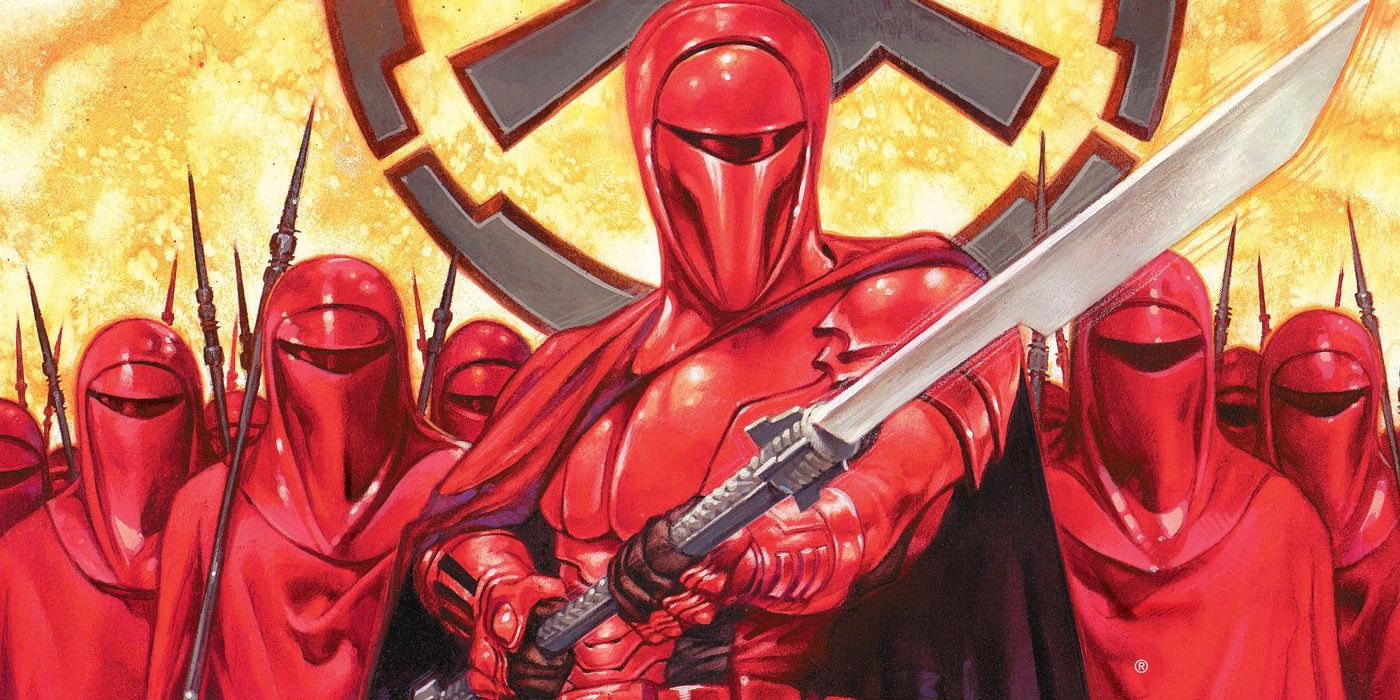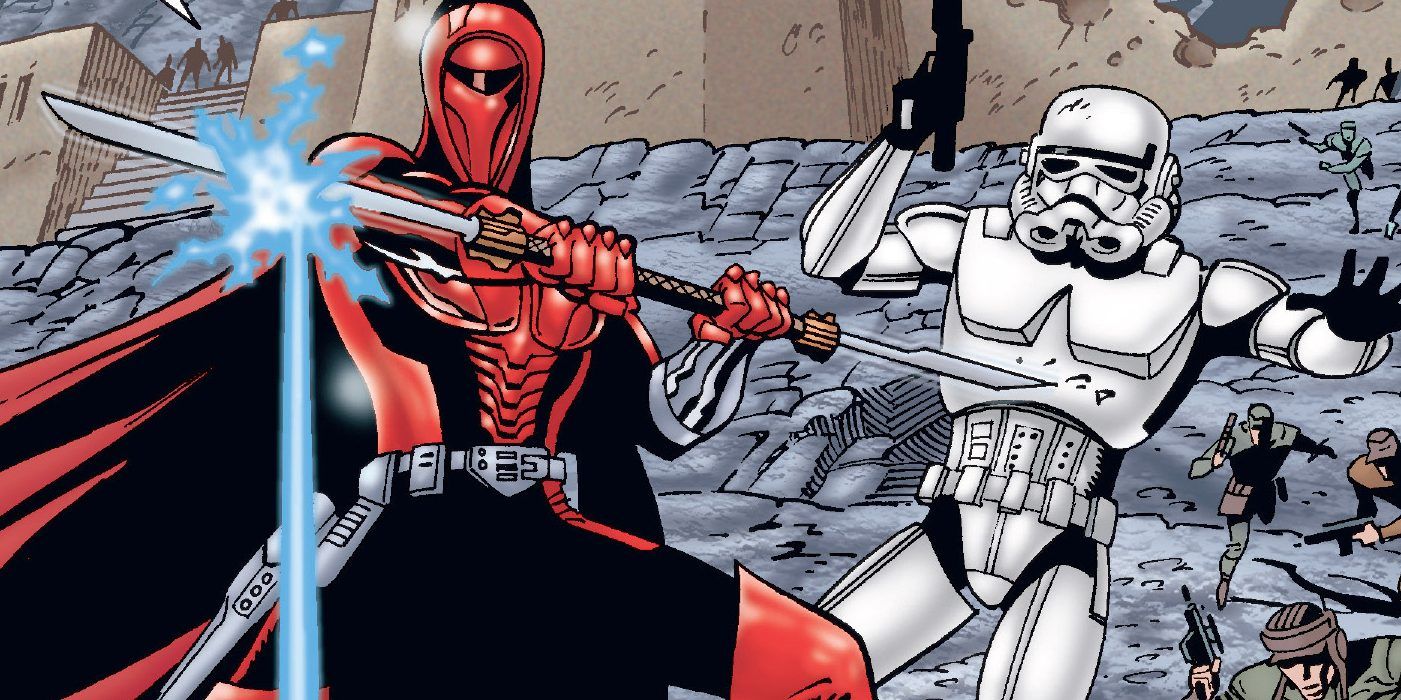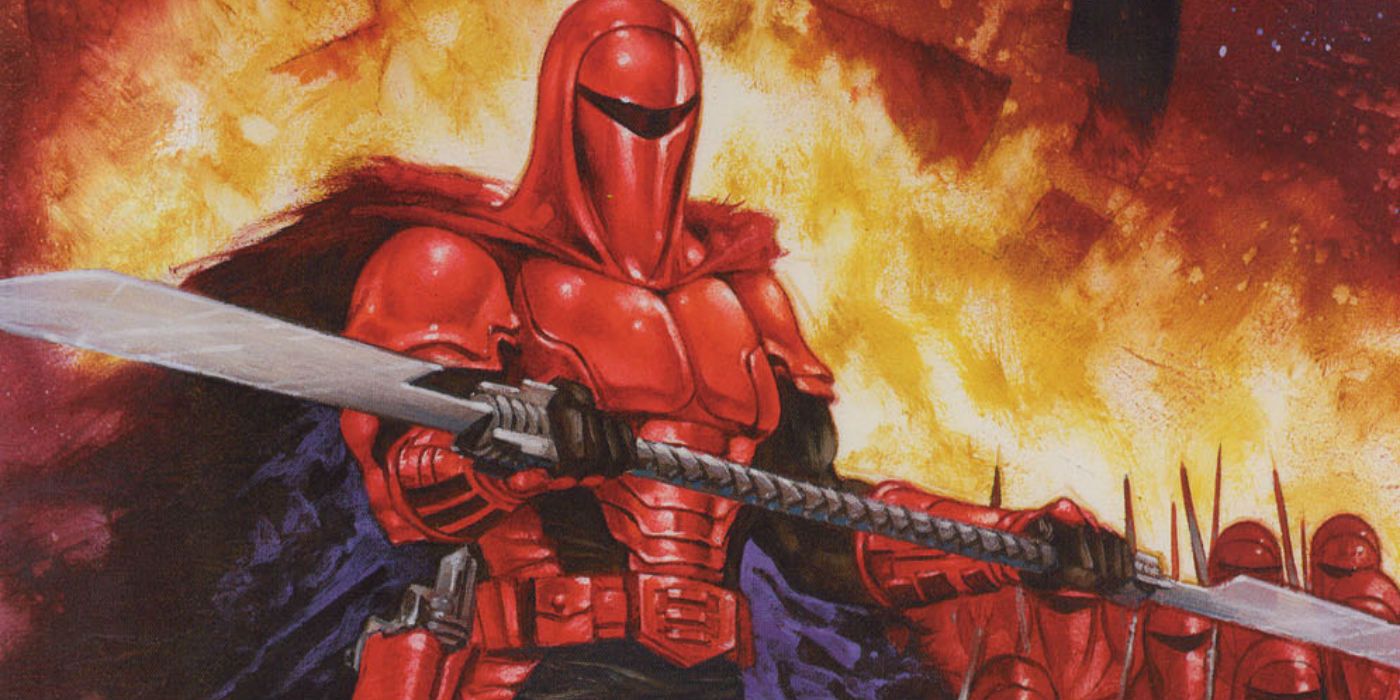The Imperial Guards from Star Wars are not as iconic as the Stormtroopers for a very good reason: they don't exactly do much during the films. While the Elite Praetorian Guards put up a good fight against Rey and Kylo ren in Star Wars: The Last Jedi, those figures aren't quite the same as the haunting, spectral figures we saw surrounding Emperor Palpatine in the final film in the original trilogy, Star Wars: Return of the Jedi.
While their purpose and their story remained unclear for years, the Legends Canon would later fill in the blanks surrounding these enigmatic, haunting figures in the form of comics. That primarily happened in Mike Richardson, Randy Stradley and Paul Gulacy's Crimson Empire trilogy, three comic miniseries released by Dark Horse starting in the late '90s that outline the rivalry between two Imperial Guards: Kir Kanos and Carnor Jax.
KANOS VS. JAX
The story takes place 11 years after the Battle of Yavin, a few years after The Mandalorian takes place in the current canon. Kir Kanos is a fiercely loyal devotee to the Empire who became an Imperial Guard after years of brutal, intense training. But when one of his fellow guardsmen, Carnor Jax, betrays the Empire and destroys a Guardsman stronghold with a legion of Stormtroopers, Kanos sets out for revenge, even if it means working alongside the Rebellion and destroying the remnants of the Empire.
What's so compelling about Kanos is that, in his drive for retribution for the Empire, Kanos seems willing to destroy what's left of it. The Empire he knows no longer exists, which leads him down an aimless, morally grey path where he serves his own goals. It's a compelling narrative that, for its time, introduced a new cast of characters that became immediately popular.
The original miniseries proved so popular it spawned two sequels, Crimson Empire II: Council of Blood and Crimson Empire III—Empire Lost. The stories focus on how Kanos' actions have irrevocably altered the trajectory of the Empire, leaving it without order drowning in chaos. It's a saga that's not simply about revenge, but the greater ramifications that revenge has on the world around you. Ultimately, it leads to a story of redemption, with Kanos's narrative intersecting with every part of the established Star Wars saga.
THE SAGA OF THE IMPERIAL GUARDS
The story outlines Kanos's journey for revenge, with him reflecting on the past and the intense training that went into his status as an Imperial Guard. While fans previously had a sense that the Stormtroopers functioned as foot soldiers, the role that the Imperial Guard played was unclear. They weren't generals, like the Imperial admirals on the decks of Star Destroyers. They just looked like guards, but they never fought.
The Crimson Empire trilogy outlined the brutal training and evaluations that Imperial Guards underwent. All of them were personally selected by the Emperor, with Darth Vader himself often either exacting punishment against insubordinate or disappointing Guards or marking those who stood before him. Kanos, for example, sports a scar on his face given to him by Vader.
The Guards in-training are also forced to duel to the death in order to gain positions as Imperial Guards. Kanos graduates after slaying his partner Lemmet Tauk in a dueling arena. We see the brutal, highly competitive nature of these Guards, as well as their fierce, almost cult-like loyalty to the Emperor. We also gain a sense of their fighting capabilities, with the legions of Imperial Guards being able to take down hundreds of Stormtroopers each during Jax's siege on Yinchorr, which left the Imperial Guards all but destroyed. Jax even later demonstrates Force powers, indicating that many members of the Imperial Guard probably have some sensitivity with the Force, given what skilled fighters they are.
Ultimately, Crimson Empire answers the two biggest questions about these red-clad warriors. It shows what the Imperial Guard was like during the Empire's heights, and it shows what became of these guards shortly after the Emperor's demise. Furthermore, it showed how the Imperial Guards in a way took command of factions of a fractured Empire, which only re-establishes how the war changed following the Empire's defeat. In many respects, we see the same thing echoed in modern Star Wars, with Imperial warlords like Moff Gideon retaining fealty of some Stormtroopers and the fate of the war hanging in the balance over a few remaining battalions. In some sense of the word, Crimson Empire was to Legends Canon what The Mandalorian is to modern canon: a narrative that expands an undiscovered country of narrative potential.



